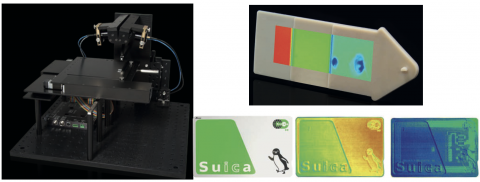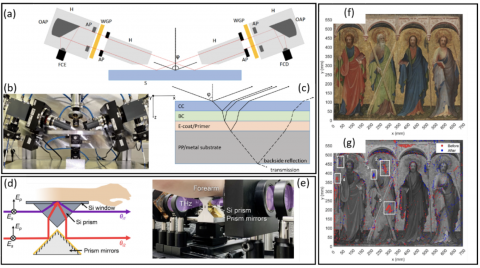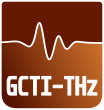Multi-user platform for spectroscopy and imaging
The terahertz band of the electromagnetic spectrum (1 THz ~ 4.1 meV) covers a range from 100 GHz (3 mm of wavelength) to 10 THz (30 µm). This technologically challenging field, situated between the areas of electronics and optics, remained unexplored until the emergence of affordable sources and the introduction of THz time-domain spectroscopy (THz-TDS). Since then, THz-TDS has evolved into an indispensable tool for the study of fundamental excitations in condensed matter, quantifying the complex refractive index, permittivity, and optical conductivity. As a result, it has deepened the understanding of physics, chemistry, and biology by providing invaluable insights into phenomena that were previously challenging to investigate. On the practical side, this technique has proven invaluable in diverse fields, ranging from the preservation of artistic heritage to industrial quality control. With its exceptional ability to enable precise and non-destructive examination of various materials, THz-TDS plays a pivotal role in medical and biomedical research, facilitating sensitive and non-invasive detection of changes in biological tissues and medically significant materials.
This multi-user equipment (EMU-FAPESP) is a versatile THz-TDS platform, which is easily integrable with complex experimental setups in various research centers. Moreover, the platform is compatible with near-field microscopes, ensuring high spatial resolution. The EMU is a commercial product from TOPTICA model TeraFlash pro, version Dual. The equipment is a fast and compact time-domain terahertz platform for spectroscopy and imaging applications. As shown below, the broadband system covers up to 6 THz. Download here the product brochure.

Additionally, with the incorporation of accessories for sample or detection scanning, this platform is transformed into an ideal tool for imaging in various industrial applications. The picture below shows a photograph of the imaging accessory in reflection mode and illustrations of two possible applications for mapping defects or internal components, that are hidden in the visible spectrum but acessible to terahertz radiation (figure extracted from the product brochure, check more examples here).

The figure below shows a few applications of THz-TDS that can be developed with the EMU: (a,b) Schematic diagram and photograph of a THz ellipsometer that can be assembled for studies of the industrial quality of paint and coating layers with (c) model of a three-layer system on a substrate, illustrating the transmissions and reflections for each layer; (d,e) Diagram and photograph of an ellipsometer adapted for in vivo analysis of biological tissues; (f) Photograph of a painting illuminated by visible light and (g) mapping of delamination in the paintings of cultural heritage through THz imaging. Images reproduced from [A, B, C]. Many more applications are summarized in this review.

HOW TO USE
Submit your proposal for using the EMU in academic research or industrial applications.
Reservations of the equipment and the payment for analysis and imaging services is organized through the USP Multi website.
EMU Committee
The facility is under the coordination of researchers from USP, CNPEM and UFSCar:
PR - Dr. Felix G. G. Hernandez / IFUSP
PA - Dr. Ariano G. Rodrigues / CCET-UFSCar
PA - Dr. Francisco C. B. Maia / CNPEM
PA - Dr. Raul O. Freitas / CNPEM
PA - Dr. Yuri Pusep / IFSC
The facility receives scientific and technical support from:
- Dr. Anderson K. Okazaki / CNPEM
- Dra. Ingrid D. Barcelos / CNPEM
- Dr. Marcio P.F. Godoy / CCET-UFSCar
- Dr. Nicolas M. Kawahala / IFUSP
- Dr. Paulo H. O. Rappl / INPE
